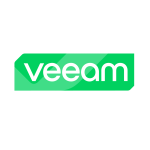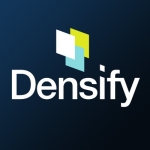What is our primary use case?
Our private data center has been built on VMware technology. We are using vSAN and we use vROps as a monitoring solution to monitor the full stack, from applications to hardware. That includes the servers and Cisco switches.
The solution is deployed on-premises in our private data center.
How has it helped my organization?
It enables us to monitor the full software-defined infrastructure from the app level to the hardware level. This is the main benefit for our organization.
What is most valuable?
When there is an issue at the disk level in vSAN, vROps gives us an alarm that the issue is happening on particular disks. Other solutions cannot give this type of alert for vCenter. Even vCenter cannot give that type of information. That's what makes this feature valuable for me.
The visibility it provides from apps to infrastructure is very good, compared to other monitoring solutions in the market. We have used other solutions, and we are still using them, but for monitoring your VMware infrastructure, vROps is very good.
What needs improvement?
vROps is user-friendly, but configuration is a little bit hard. It is also hard if you want to customize it for your data center, especially without VMware training. The user interface should be improved so that a new user can easily configure it for his own use.
For how long have I used the solution?
I have been using VMware vRealize Operations for the last four years.
What do I think about the stability of the solution?
The stability is good enough to monitor private and hybrid clouds. Even though we are using very few of the features of vROps, it is very good. It is very useful for a cloud provider that is managing large-scale VMware technology for their cloud. It is good monitoring and operations software for them.
What do I think about the scalability of the solution?
It is highly scalable.
We are already in the middle of a project to increase our infrastructure and we have included vROps in that project.
How are customer service and technical support?
Customer support is good, but the main problem is that VMware support is very costly compared to other organizations' support. When you purchase a VMware product, such as vSphere or vROps, the license is perpetual, but you also have to purchase the support service for a number of years. The support service pricing is very high compared to the license, and compared to competitive vendors.
Which solution did I use previously and why did I switch?
Before vROps, we were using SolarWinds NPM. The primary reason we switched was that we were looking for a solution that would give in-depth monitoring capabilities for VMware infrastructure.
How was the initial setup?
The initial deployment of vROps was straightforward. We deployed ESXi, vCenter, and then vSAN. After that, we deployed vROps on-premises to monitor our VMware vSAN cluster. There was nothing special or complex about it.
It took four to five days to deploy vROps.
We have three people who are using and managing vROps and we are monitoring about 500 virtual machines with the solution.
What about the implementation team?
We used a third-party integration partner that is certified by VMware. I felt that they were not well-trained on vROps.
What was our ROI?
The value we get from vROps is fine, but it would be better if the support cost were lower.
Which other solutions did I evaluate?
We did not look into other solutions because, at that time, we already had our VMware infrastructure. vROps is the best option for monitoring VMware infrastructure.
What other advice do I have?
If your infrastructure is VMware-based, meaning you are using vSphere, vSAN, and vCenter, and if you are a large-scale cloud service provider, you should consider vROps as your monitoring and operations solution.
Which deployment model are you using for this solution?
On-premises
Disclosure: I am a real user, and this review is based on my own experience and opinions.













